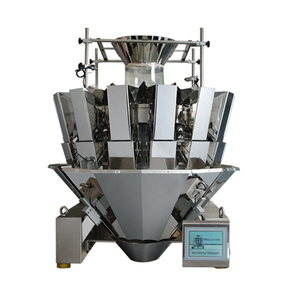
All categories
Featured selections
Trade Assurance
Buyer Central
Help Center
Get the app
Become a supplier

(957 products available)





















Four-head gravity bottle fillers are popular in the beverage industry for their effectiveness, affordability, and user-friendly design. Many models are available to meet different business needs and product characteristics.
Sanitary Gravity Fillers
These models have a IECEx certified food pump designed for gravity filling. Product contact parts are grade 316L stainless steel with a polished interior to ensure that no product residue is present. In addition, smart motor technology helps enhance food safety.
Manual Fillers
Usually, manual gravity fillers will have vacuum-assisted nozzles that fill the bottles when the operator pushes a button to start the filling cycle. Nozzle cups immediately retract when the filling cycle is complete, and the filled bottle is ready for departure.
Automated Fillers
More advanced models have an automatic fill cycle and a stop signal at the desired fill level. This signal may be a limit switch, photo eye, or even a scale inside the container. These units are particularly well suited for control schemes involving integrating fill and cap functions.
Explosion-Proof Fillers
Explosion-proof gravity fillers comply with class or division explosion-proof standards. They have a typical three-piece filling head, a holding tank with a level sensor for automatic filling, a FLAG control panel with a recipe manager, and a lightweight anti-explosion housing.
Semi-Automatic Fillers
These models are more affordable than their fully automatic counterparts, and operators manually place them under a filling collar. The levers or foot pedals manually initiate the filling cycle.
The performance of the bottle fillers is closely related to the operational capacity of the filling systems and the quality of the final products. To ensure that they can work with the manufacturing industry and help create products, it is important to understand the technical details of their design and how to care for them properly.
Specifications:
Maintenance:
Gravity bottle fillers with four heads are commonly used in these industries.
Small-scale beverage production:
It is ideal for artisanal breweries, cideries, and juiceries looking to fill bottles with their products. These fills can accommodate a variety of beverages, including beer, fruit cider, and carbonated juices.
Craft brewery and winery:
These are also commonly used in craft brewery and winery operations. They provide a cost-effective filler solution and winery tasks that aim to avoid oxidation.
Gravity bottle fillers with four heads are suitable for filling still water into standard-sized bottles. The following process will help achieve a stable product, and training the operator on the suction process will be important.
Step one: Place the desired amount of water into the empty bottle. To begin the suction process, insert the hose tip into the bottle.
Step two: Pinch the hose to start the suction. The hose will pull the water through until the bottle is full.
Step three: After the process, pinch the hose again to stop suction. This process can be repeated several times with different bottles.
Small-scale sauce, oil, and condiment production:
It can also be used for small-scale sauce, oil, and condiment production. For those who want to make and package homemade products in bulk, a 4-head gravity filler can help fill bottles with sauces, oils, and condiments efficiently.
As described above, the process is easy and can be done in 3 steps. However, products that require precise fill levels and clean operations should be considered for more structured fills with no manual intervention.
Household and personal care product packaging:
When used with vacuum filling, GBF can fill products with household and personal care requirements, such as cleaning supplies, detergents, and hair care products.
Using a gravity bottle for these kinds of products has its advantages. For one, it is cost-efficient and easy to set up, which is suitable for small-scale operations. Additionally, it fills products with low-viscosity liquids quickly, saving dirt and time.
Food packaging:
Food packaging is another industry scenario where a gravity bottle filler comes in handy. Gravity helps fill bottles with various food items, including water, beverages, sauces, dressings, and oils.
Pharmaceutical and chemical packaging:
It is suitable for filling products for chemical and pharmaceutical industries as long as the chemicals are not harmful or hazardous.
Cosmetics and toiletries:
In the cosmetic and toileting industry, fillers can fill beauty and personal care products like lotions, shampoos, conditioners, and serums. The gravity filler's adjustable filling speed and volume control allow for accurate filling of products in different sizes and shapes.
Here's how to choose an ideal 4 head gravity bottle filler for needs:
Q1: What are the latest trends in bottle filling technology?
A1: The bottle filling industry has recently begun witnessing trends such as eco-friendly practices, automation and AI technology, increasing demand for quality control, changing bottle designs, and customization and partnerships.
Q2: What are the advantages of using multiple-head fillers?
A2: 4-head gravity bottle fillers and other multi-head fillers increase production speed and efficiency by reducing the time taken for each filling operation. They also allow for simultaneous filling of multiple bottles, which minimizes bottlenecks in the production line.
Q3: What is the difference between gravity and pressure bottle fillers?
A3: Gravity bottle fillers rely on the natural gravitational pull to fill bottles, while pressure bottle fillers utilize external pressure, such as air or water pressure, to force the product into the bottles.
Q4: Are four-head gravity bottle fillers suitable for all types of liquids?
A4: 4 head gravity bottle fillers are ideal for thin liquids, but they may not be suitable for thick liquids, viscous liquids, and liquids that require specific filling speeds and accuracy.
Q5: How do 4-head gravity bottle fillers compare to other types of bottle fillers?
A5: Four-head gravity fillers are typically more affordable than pump fillers and pressure fillers. However, as previously stated, they are most suitable for thin liquids and low to mid-level production.